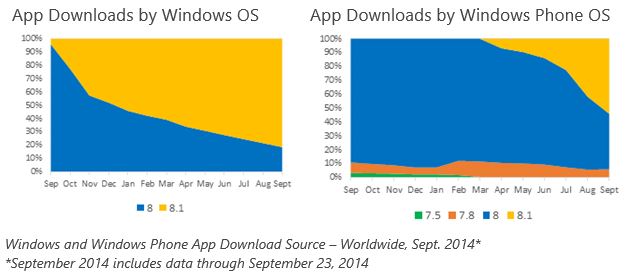Here's the platform chart of interest (on the right):

The significance of the Developer Preview programme can be seen in the inroads that 8.1 made long before the update was officially available, by the way. So 8.1's advance overall includes all the factors mentioned above.
One has to wonder about the other 40+% of users who are still using Windows Phone 8.0 though - given that the Lumia devices (making up over 90% of the market) have now had their Cyan rollout completed (barring a few network operators here and there), why is this figure so high?
Possible reasons:
- there are substantial numbers of people who simply tap on 'cancel' or back when prompted that an upgrade is available. We all know people like this, who leave their Windows desktops unpatched for years because they 'like it how it is' and 'don't want to break anything'. Which is all very well, but they're missing out on security fixes which may come back to bite them, plus in the case of Windows Phone 8.1, they're missing out on lots of new functionality.
- in some markets, Wi-fi and fast data is a rarity and so the opportunity to download the substantial update hasn't presented itself yet.
I'm clutching at straws here though. Comments? What other reasons could there be for 40+% of the userbase not having upgraded yet?
There's plenty more in the blog post, not least this chart of where Windows Phone users are across the world (again, right):

The worldwide spread for Windows Phone is very evident, compared to the USA-centric nature for Windows on the desktop. Here in the UK, we have 6% of world users of the platform, with Italy at 5% and France and Germany not far behind. In fact, the EFIGS block in Europe has about 20% of WP users, in total.
